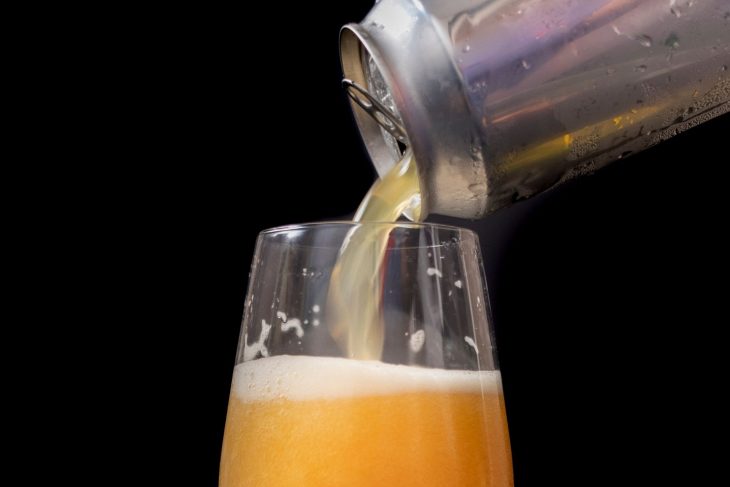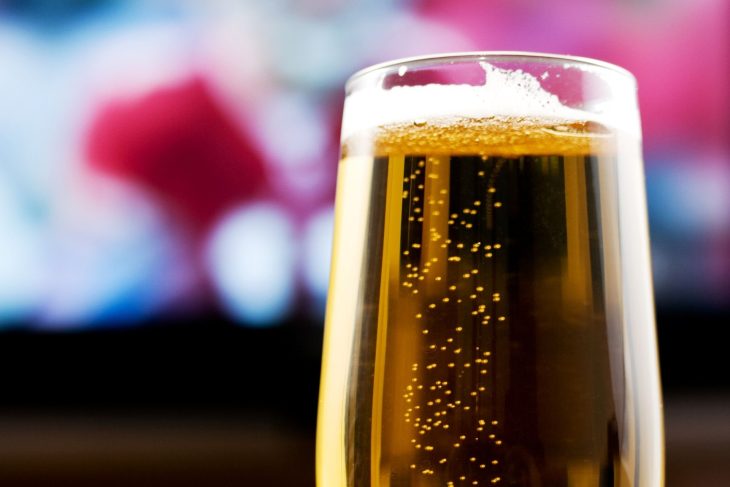Hey there! This site is reader-supported and we earn commissions if you purchase products from retailers after clicking on a link from our site.
When you think of the perfect draught of beer, you probably imagine a fizzing liquid of amber or yellow and a little foam on the top. You know the flavor of hops and malts, and the scent is one that can’t be mistaken. But what happens when you erase the “fizzy” part and leave all the rest? Is that still beer?
Interestingly, yes, that is literally still beer. Right now, there are many craft beer drinkers who enjoy beers that are absent of their carbonation. These are known as either non-carbonated beers or still beers.
What is Non-Carbonated Beer?
Beers are relatively gassy drinks. In other words, they contain a lot of CO2—or carbonation—that give beer its quintessential fizz. Some beers, like Budweiser, Stella Artois, and Coors Light have some of the highest levels of CO2 in the brew. For instance, Budweiser has around 2.71 pints of CO2 per 1 pint of beer, meaning you’re swallowing more gas than liquid. Obviously, a non-carbonated beer is going to have very low to almost nonexistent levels of carbonation in the brew.
Now, that might sound like a horrible idea. Who in their right mind would drink flat or still beer for fun? Well, sometimes it’s actually a lovely thing, because the beer is smoother and much more like a luxury vino than a soda. Some people might also want to consume less carbonated beverages for health reasons. With still beer, they don’t have to worry about giving up something that they enjoy.
What Are Different Types of Non-Carbonated Beer?
When beers are brewed in a traditional sense, you are going to get carbonation no matter what. That is because carbonation is caused by CO2, which is a byproduct of fermentation. However, there are a couple methods of brewing beer that result in lower amounts of carbonation.
Those are nitro brewed beer and cask-conditioned beer.

About Nitro Beer
Nitro beer is made with about 30 percent carbon dioxide and 70 percent nitrogen, producing a beer that is much smoother than beer pumped up on CO2. You get a cascading effect of silky bubbles and a fluffy head at the top. It’s a visually appealing beer with a unique flavor. While this beer does have some carbonation, you won’t notice it much.
About Cask-Conditioned Beer
Also known as cask ale, cask-conditioned beer is both brewed in and served from a cask. Up until the cask, the brewing process is relatively the same—mashing, boiling, and fermenting. However, once primary fermentation is accomplished, the beer is placed inside a cask with some finings—or substances made to cause any suspended particles to drop—for clarity. Sugar is usually added into the cask, as well, and maybe some hops.
Then the conditioning part begins. Conditioning is the final stage in crafting a delicious beer. Since there is a small portion of yeast remaining for this secondary fermentation, you get a little carbonation. The duration of conditioning may last anywhere from 1 day to 16 days.
Like nitro beers, cask-conditioned beers have far less carbonation than traditional beers. Plus, they are unpasteurized and unfiltered, contain live yeast, and have a creamy texture. When you order a cask ale, you never have to worry about force-carbonation.
How About High Alcohol Content Beers?
Here’s an interesting tidbit: beers that generally have high amounts of alcohol are going to have far less carbonation. The issue here is that you have much more booze to deal with, so if you are aiming for something on the lighter side, a less effervescent, high ABV beer may not be for you.
Which Brands Have Non-Carbonated Beer?
Depending on where you are located in the world, you might have a more difficult time locating non-carbonated beers. For example, in the USA, the most popular beers are carbonated. Yet, in Belgium, still beers are rather popular—and have become something of a tradition. Belgium lambics are often bagged or kegged without any bubbles and served flat. There’s a good reason for this. Lambics are more acidic. If there is too much carbonation, it would be like drinking acid. So the beer is made more potable by cutting out the carbonic acid.
But you don’t have to go all the way to Belgium to enjoy a non-carbonated beer.

A few American breweries have decided to test out less bubbly beers. In Portland, Oregon, Upright Brewing has created a raw-wheat beer that tastes close to vermouth. The 2021 release is called Ives Blend 7.
Side Project Brewing of St. Louis, Missouri is making the Belgian-style Trail Dubbel that is aged in red wine barrels. Another brewery in Colorado, called Atom Brewing of Erie, has an imperial stout called Stillness that is, obviously, poured still.
If you’re looking for a beer produced in Belgium, check out the fizzless beer called Cuvee Delphine on Steroids (C-DOS) by De Struise Brouwers. The stout is aged in bourbon barrels before aging once again in Arran Lochranza Scotch barrels until it reaches 41 percent ABV.
For cask-conditioned beers, you are going to have to check your local pubs and breweries to see what they have. Since cask-conditioned beer requires skilled handling and pouring experience, it is not a common find.
As for nitro beers, the most notable is the Guinness draught, which is considered the king of nitro brews to this very day. Guinness also has a nitro-brewed IPA that was released in 2015. Similarly, Colorado-based Breckenridge Brewery has a nitrogen brewed Irish Stout that was inspired by Guinness.
There are options out there, but you will have to do some searching. You could also try brewing your own batch of non-carbonated beer. You could possibly get a decent result by using a different kind of yeast, such as baker’s yeast.
Final Thoughts on Non-Carbonated Beer
All in all, beers without carbonation are not a rarity, though it may take the general beer-drinking population some convincing that still beers are just as delicious. Non-carbonated beers are becoming more common, whether you see them as a nitro brew, a cask ale, a high ABV beer, or a Belgian lambic; be sure to give them a taste test whenever you get a chance. You might be surprised by how smooth beer can be when it’s not fizzing!
Recommended Reading
What’s The Point of Non-Alcoholic Beer?
If you’re looking for a way to enjoy beer without consuming loads of alcohol, non-alcoholic beer might be exactly what you are looking for.
Is Beer Gluten Free?
We’re going to answer the most poignant question: Does beer contain gluten? If so, is there low gluten beer or gluten free beer available?
Half and Half Beers – A Wholesome Experience
If you never had a Half and Half beer cocktail before, you are definitely going to want to try one out by the end of this article. So let’s get started.
Is Helium Beer Real? What is Helium Beer Anyway?
There is some science as to why helium beer is more or less impossible. It can be done, but not in the way that people would want.
The 16 Best German Beer You Should Try Out
If you find yourself wishing for a taste bud adventure, here are 16 of the best German beer brands to fill up your stein.
All You Want to Know About Honey Beer + Our Picks
If you have never tried honey beer before and are curious to give it a go, then you are in the right spot.
